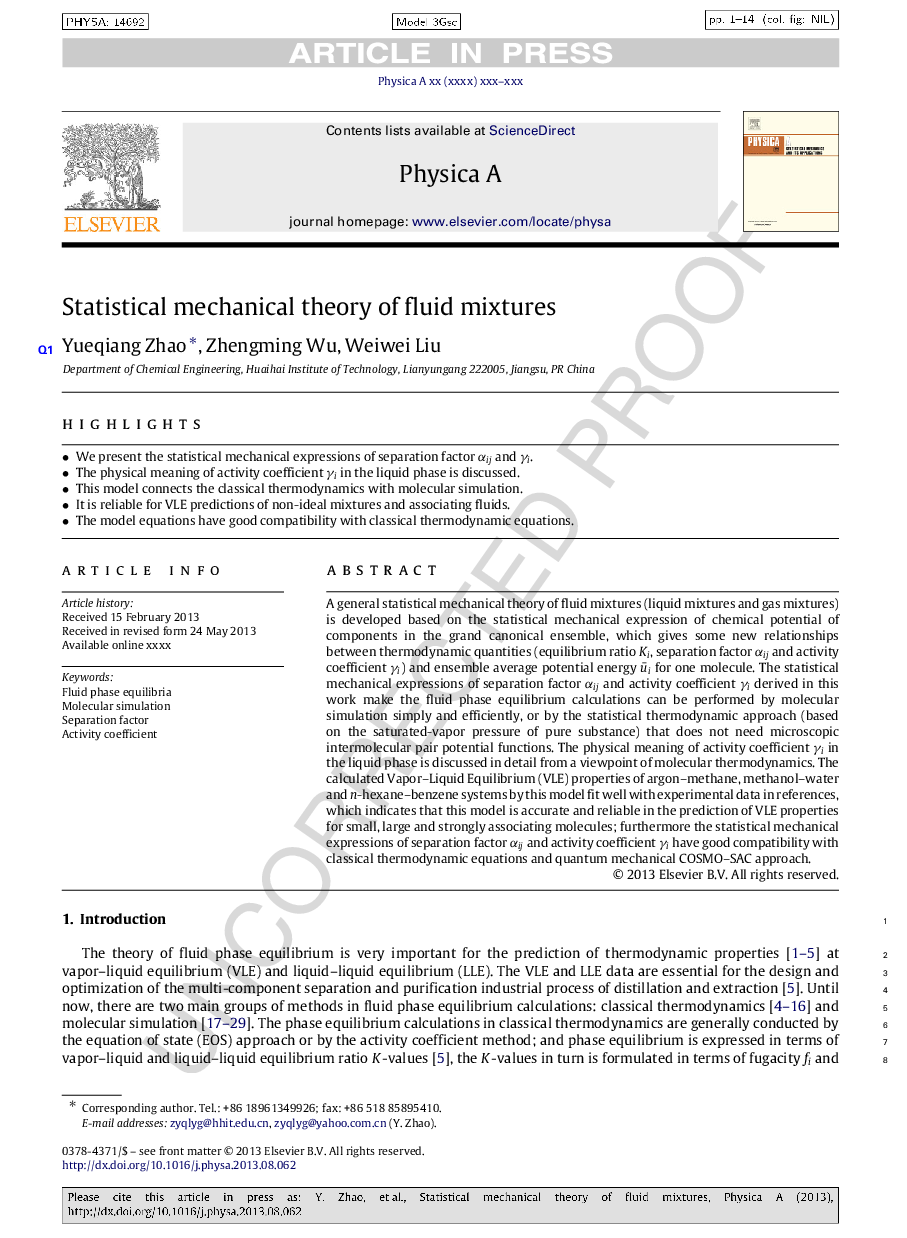| Article ID | Journal | Published Year | Pages | File Type |
|---|---|---|---|---|
| 7382093 | Physica A: Statistical Mechanics and its Applications | 2014 | 14 Pages |
Abstract
A general statistical mechanical theory of fluid mixtures (liquid mixtures and gas mixtures) is developed based on the statistical mechanical expression of chemical potential of components in the grand canonical ensemble, which gives some new relationships between thermodynamic quantities (equilibrium ratio Ki, separation factor αij and activity coefficient γi) and ensemble average potential energy uÌi for one molecule. The statistical mechanical expressions of separation factor αij and activity coefficient γi derived in this work make the fluid phase equilibrium calculations can be performed by molecular simulation simply and efficiently, or by the statistical thermodynamic approach (based on the saturated-vapor pressure of pure substance) that does not need microscopic intermolecular pair potential functions. The physical meaning of activity coefficient γi in the liquid phase is discussed in detail from a viewpoint of molecular thermodynamics. The calculated Vapor-Liquid Equilibrium (VLE) properties of argon-methane, methanol-water and n-hexane-benzene systems by this model fit well with experimental data in references, which indicates that this model is accurate and reliable in the prediction of VLE properties for small, large and strongly associating molecules; furthermore the statistical mechanical expressions of separation factor αij and activity coefficient γi have good compatibility with classical thermodynamic equations and quantum mechanical COSMO-SAC approach.
Related Topics
Physical Sciences and Engineering
Mathematics
Mathematical Physics
Authors
Yueqiang Zhao, Zhengming Wu, Weiwei Liu,
